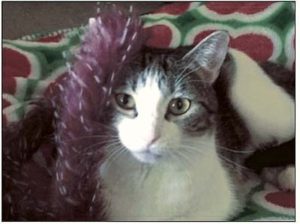
I’m often asked how the Yavapai Humane Society (YHS) maintains its “no-kill” status. (“no-kill” is defined as applying the same criteria to deciding a homeless animal’s fate that a devoted pet owner or a conscientious veterinarian would apply to a beloved pet). Since embracing this ethic in July 2010, pet euthanasia in our community has declined 94 percent, and 97 percent of all the animals rescued are re-homed (compared to the national average of about 40 percent).
How do we do this? Every animal shelter has “decision points.” YHS refers to these as our “moments of truth” – junctures where we ask ourselves if we’re being true to our no-kill ethic or are we capitulating to expediency because of a perceived lack of resources.
Let me share a true story to help illustrate how YHS responds to moments of truth. On a Wednesday this past April a Good Samaritan found a severely injured four year old cat hit by a car. The Samaritan rushed the cat to YHS where we found no microchip, collar or ID. This sweet cat was clearly someone’s pet; but now she was alone and scared.
Moment of Truth 1: Euthanize or treat?
The trauma was severe. No one would have faulted YHS for humanely euthanizing this cat at that moment. In fact, it is common practice in many shelters to immediately euthanize severely injured animals at impound. Instead, the YHS medical team jumped into action and stabilized, evaluated and diagnosed the cat – finding a right femoral head fracture and gross hematuria. She was befittingly named Tuscany, defined in the Urban Dictionary as a “perfect mixture of art and wisdom.”
Moment of Truth 2: Euthanize or operate?
Tuscany’s prognosis was good so the YHS medical team performed surgery. However, weeks of recovery were now necessary – requiring prolonged use of cage space that could otherwise benefit many other cats.
Moment of Truth 3: Euthanize or Foster
To benefit the greatest number of animals, Tuscany was placed into Foster Care with a qualified YHS volunteer. While in Foster Care our volunteer discovered a lump – demonstrating the value of the individualized attention foster volunteers provide. The YHS Chief Veterinarian was consulted and confirmed three masses had acutely developed – suggesting cancer.
Moment of Truth 4: Euthanize or test?
To make an informed decision, biopsies were performed. Two tests were negative; the third discovered fibrosarcoma, a type of soft tissue cancer. Prognosis in such cases, even with surgery, projected a mean survival time of about 19 months. Recovery would take weeks and the trauma would negatively impact Tuscany’s remaining quality of life.
Moment of Truth 5: Euthanize or hospice?
In many shelters, euthanasia would be the only remaining option. YHS had three: uncertain surgery, euthanasia, or keep her comfortable until the tumor metastasizes. Because Tuscany has significant quality of life, she was placed in the YHS Hospice Program – where she is thriving in a home dedicated to ensuring her remaining months are filled with tender loving care.
Multiply Tuscany’s story by 3,500 animals annually and you begin to understand the challenge. Every animal has a story – and our mission is to create as many happy endings as possible.
Tuscany’s story underscores how YHS depends on exceptional employees and compassionate volunteers and supporters. If you’d like to volunteer to provide foster or hospice care to a needy animal, contact your local shelter. If you’d like to help support lifesaving programs financially, send your tax-deductible gift to your local shelter or call for information on giving opportunities. Together we can keep this dream alive.
